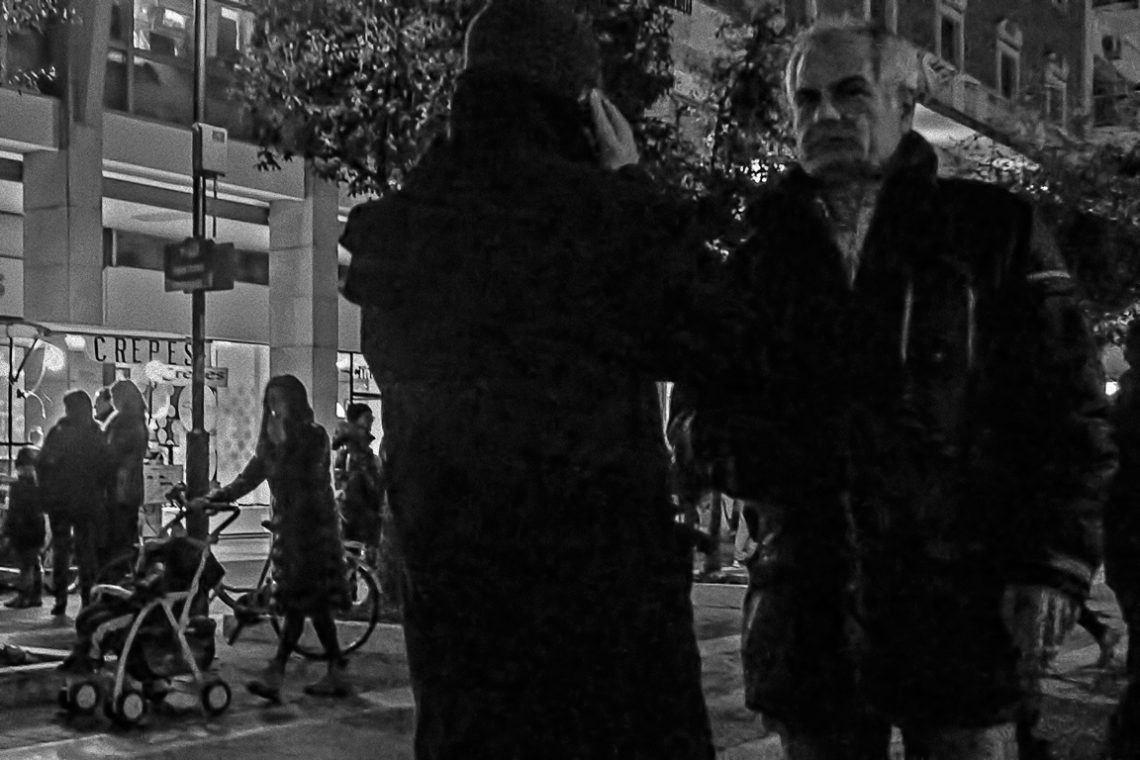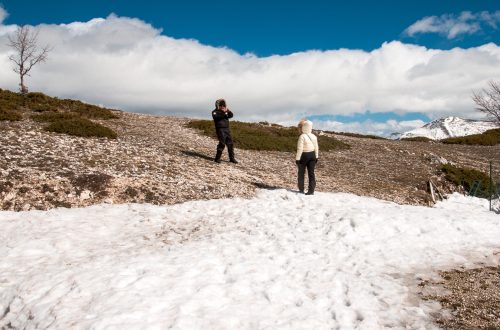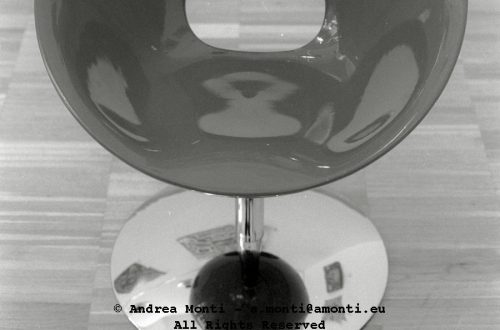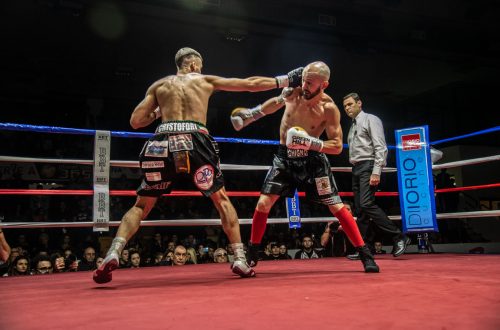
Watch My Back
There’s a charged stillness to this image — a tension that sits somewhere between street observation and a quiet cinematic moment. Two men occupy the foreground: one turned away, phone to his ear; the other facing us, his gaze piercing the lens with an unreadable mix of caution and assessment. The title primes us to read this as a scene about alertness, and the body language supports it.
The boulevard behind them is busy but not chaotic. A woman pushes a pram, silhouettes cross in different directions, shop signs glow faintly in the night. The interplay of light and shadow here is critical: the background is brighter, with the shopfront casting a soft, almost diffuse glow, while the subjects are cloaked in shadow — a deliberate exposure choice that frames them as figures apart from the flow of the crowd.
From a technical perspective, the shot pushes the limits of low-light street work. There’s visible noise in the darker areas, but it doesn’t feel like a flaw — rather, it adds a grainy urgency that suits the implied narrative. The highlights are held in check, preventing the illuminated background from blowing out and preserving the detail in the shop signage and passing figures. Depth is handled well; despite the dim light, there’s a clear separation between foreground and background.
Compositionally, the off-centre placement of the main subjects works to keep the eye moving. The viewer’s gaze flickers between the man on the phone, the watchful face beside him, and the faintly busy life behind them. The stroller in mid-step becomes an unexpected secondary anchor, offering a moment of ordinariness that contrasts with the apparent watchfulness of the foreground.
It’s a photograph that rewards a slow reading. The longer you look, the more you feel the undercurrent of awareness — that instinct, whether in the service of protection, suspicion, or simple habit, to keep one’s eyes not just forward, but all around.




